Galleries
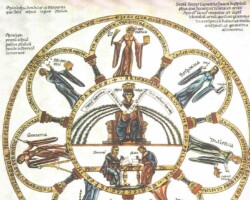

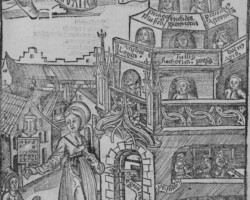
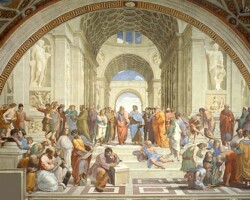
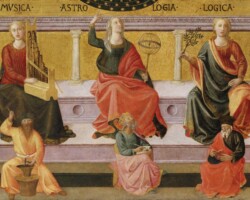






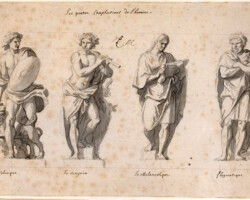
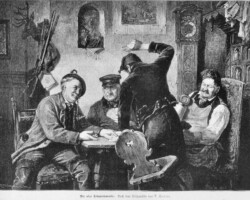
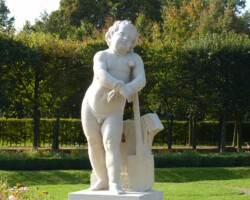
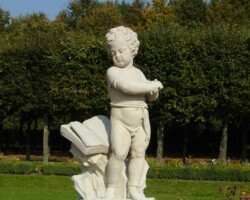


The School of Athens
Hover over the figures to see their potential identities, and click on them to read more about them.
Most of the figures have been variously identified over the years. We provide our interpretations, or several if they seem equally persuasive.
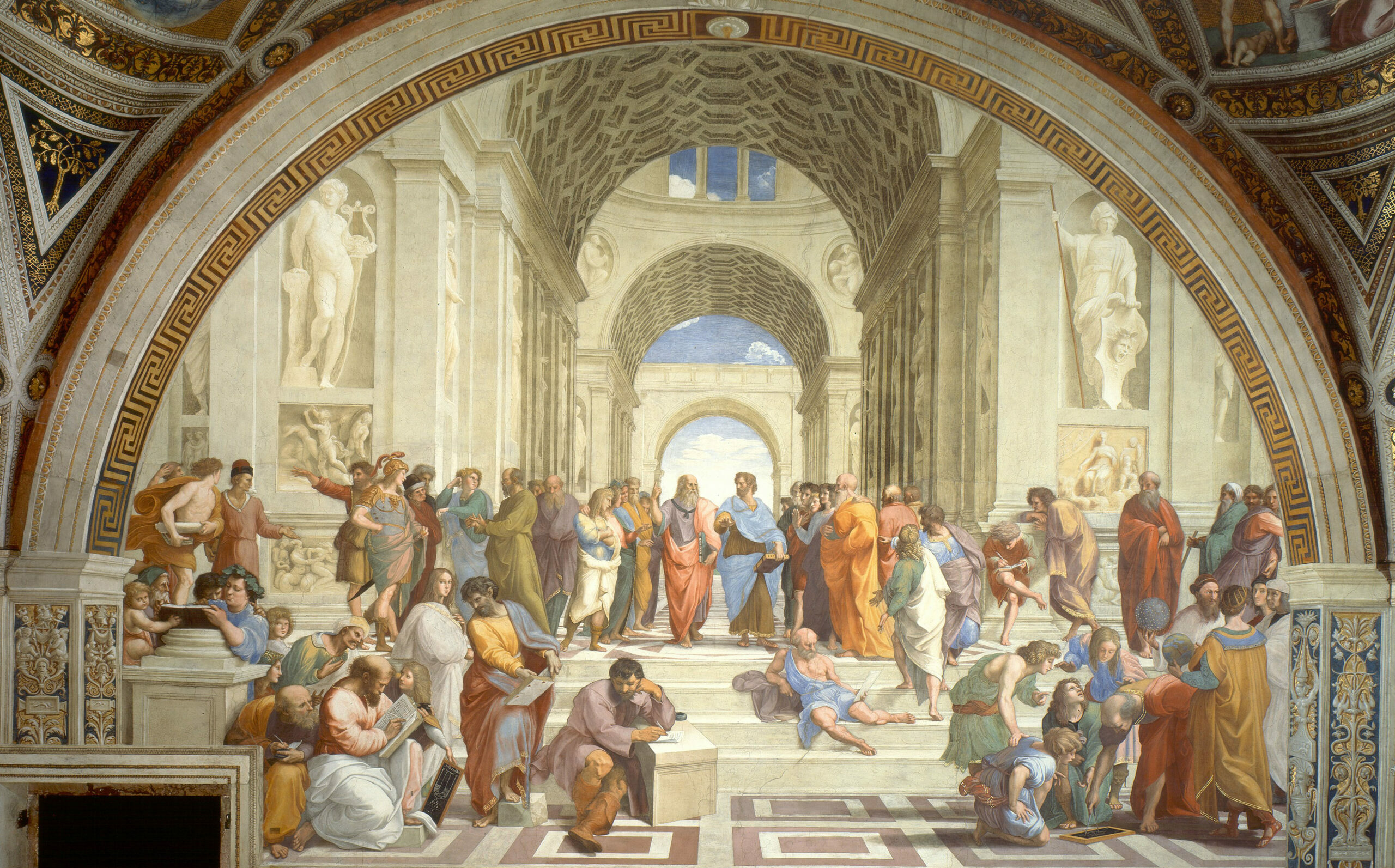
Athena
Athena is the goddess of wisdom and of war, which Raphael represents in her armor and position. She is elegantly clad for war with a wooden spear, a strong helmet, a shield with the face of Medusa, which Greek mythology says turned all viewers into stone. Although she is ready for war, she stands above the panel of peace, next to the Wall of Justice, and looking at "Mount Parnassus. This statue shows a unique combination of natural wisdom, poetry, virtue, with a readiness for action and war, which enables and protects the peace that she stands over. She models the person having gone through a liberal education.
Plato
Modeled after Raphael's teacher Leonardo Da Vinci, Plato holds his Timeaus, which gives his account of the creation of the cosmos by the Demiurge. He wears the colors purple and red, which signify the elements of the ether and fire. These colors fit Plato's philosophy because, as indicated by his upward pointing finger, he argued that reality exists in the Realm of the Forms.
Plato and Aristotle engage in peaceful conversation on important matters about what really exists. Although they both have the largest following of listeners and their figures split the room in half, they are interested in the truth about reality and the love of wisdom. While they exemplify the heights of natural wisdom, they point elsewhere. Aristotle points out both to sensible substances and across the room to the "Wall of Theology." Plato points up to the Realm of the Forms and to the key stone of the whole room, which resembles the emblem of the Church.
Apollo
Apollo, the god of poetry and the fine arts, stands naked with a lyre, learning on an tree stump, looking at "Mount Parnassus." He represents the excesses of a liberal education. Unlike Athena, he is not ready for war nor is he dressed for civil society. He is "lost" in his impassioned love for finer things, which endangers any liberal artist. Although he stands in the classical contrapposto position after the Greek "Canon" of Polycleitus, he goes too far in his leaning, which turns the more natural contrapposto position into an unnatural position for a well-formed man. He also stands above the panels of the Passions of Strife and Concupiscence. Just as Athena protects the peace that she stands over, Apollo preserves the strife and lust that he stands over.
Aristotle
Aristotle wears blue and brown robes, which are colors that signify the elements of earth and water. He also holds the Nicomachean Ethics, which a work of the greatest influence on Western Civilization's understanding of happiness.
Plato and Aristotle engage in peaceful conversation on what is the nature of reality and how should a life be lived. Plato's Timeaus attributes the order within the nature of reality to the Demiurge, whom he thought created the cosmos. Aristotle's Ethics argues that the best way of life is the practice of virtue and the contemplation of what is true. These two questions lie at the heart of the liberal education.
Although they both have the largest following of listeners and their figures split the room in half, they are interested in the truth about reality and the love of wisdom. While they exemplify the heights of natural wisdom, they point elsewhere. Aristotle points out both to sensible substances and across the room to the "Wall of Theology." Plato points up to the Realm of the Forms and to the key stone of the whole room, which resembles the emblem of the Church.
Euclid
Euclid has the features of Raphael's great mentor Donato Bramante who, as architect of St. Peter's (suggested by the vaulted ceilings of this noble edifice), was a master of geometric principles as seen in the design of his buildings. Euclid draws on a slate tablet with a compass.
Ptolemy
Ptolemy's Almagest was the most influential work on astronomy for centuries. Even though they disagree with his geocentrism, modern authors on astronomy such as Johannes Kepler acknowledge their debt to Ptolemy.
Socrates
Socrates is depicted as bald and snub-nosed, reminiscent of classical busts of the philosopher. He has the rapt attention of an unknown youth, Critias, Hermocrates, and Timaeus.
Zoroaster
Self-Portrait of Raphael
As perspective is rediscovered and mastered in Renaissance art, Raphael includes himself, along with his teacher, Perugino, on his right, with the experts of sight.
Perugino
Perugino, a painter of the Italian Renaissance, was the teacher of Raphael.
Four Stages of Learning
These four students surround Euclid depict four stages of learning. The youth in the bottom left corner, with his eyes and fingers pointed to the diagram, is intent but still on the level of literal learning. The youth to the right, in green and looking up, turns to his companion with the excitement of dawning comprehension. That companion, in the top right, already anticipates the outcome. The final youth, standing in the top left of the group, seems to be an apprentice teacher with his pointing finger and encouraging hand on the shoulder.
All four youths are gathered around the diagram on the slate, drawing attention to the faculty of sight, which is also used by the astronomers to the right of Euclid.
Diogenes
Diogenes, the famous cynic, sits absorbed in his reading, with a beggar's dish in front of him.
Heraclitus
Heraclitus, traditionally glum and antisocial, has been given the face of Michelangelo.
Virtue
Below the statue of Athena is this relief of Virtue, sitting on clouds, holding one hand at her breast, the seat of valor, while extending the other toward the earth with the scepter of her empire.
Solomon's Judgment
Partially hidden in this picture, the full depiction is of Solomon's wise and shrewd judgment about which woman's child is the live one, and which woman's is dead.
Wrath
Concupiscence
Epicurus
Epicurus, pudgy and crowned with the ivy leaves of Bacchus, the god of wine, is surrounded by the very young and the very old: supposedly the only ones who seriously attended to his teachings.
Followers of Epicurus
Timeaus
In the dialogue Timeaus, Socrates identifies Timaeus as a man who has attained the heights of philosophy and statesmanship: “For our friend Timaeus is a native of a most well-governed State, Italian Locris, and inferior to none of its citizens either in property or in rank; and not only has he occupied the highest offices and posts of honour in his State, but he has also attained, in my opinion, the very summit of eminence in all branches of philosophy” (20a; emphasis added).
Clearly, then, Timaeus is at once a philosopher and a statesmen. Another clue that Raphael intends to invoke the Timaeus is that Socrates is counting on his fingers. The opening of that dialogue reads: "One, two, three..." Thus, the man in armor is most likely Timaeus. He is also often identified as Alcibiades.
Pythagoras
Plato identifies Pythagoras as an inspiration for his philosophy. He is likely the source from which Plato formed the mathematical plan of studies as the method for emerging from the Cave in the central image of The Republic.
Boethius
This figure has been identified many different ways, but Boethius, the author of The Consolation of Philosophy, translated several scientific texts out of Greek into Latin and wrote some mathematical treatises himself, advancing science in Europe. In the painting, we see the figure copying down the work of Pythagoras.
Averroes
Identifiable by his turban, the Muslim polymath Averroes looks over the shoulder of Pythagoras.
Archytas
Archytas was a scientist in the school of Pythagoras, fittingly sitting next to Pythagoras, holding one of Pythagoras's theories on the slate.
Parmenides or Nicomachus
This figure is either the pre-Socratic philosopher Parmenides or the mathematician and music theorist Nicomachus.
Critias and Hermocrates
From the clues discussed in the description of Timaeus, these men appear to be Critias and Hermocrates, the remaining two interlocutors in the dialogue Timaeus. This enigmatic group of characters have been variously identified as Aeschines, Xenophon, and Antisthenes in different combinations. They are, at least, several close followers of Socrates, although neither their visages nor their dress identify them.
Hypatia
This enigmatic figure, looking out at us and not drawn in by the surrounding philosophers, may be the female Hypatia, a 4th to 5th century Greek Neoplatonist philosopher, astronomer, and mathematician.
The figure may also be a portrait of Francesco Maria della Rovere, the nephew of the pope at the time. A separate portrait of the young man done by Raphael looks similar.
